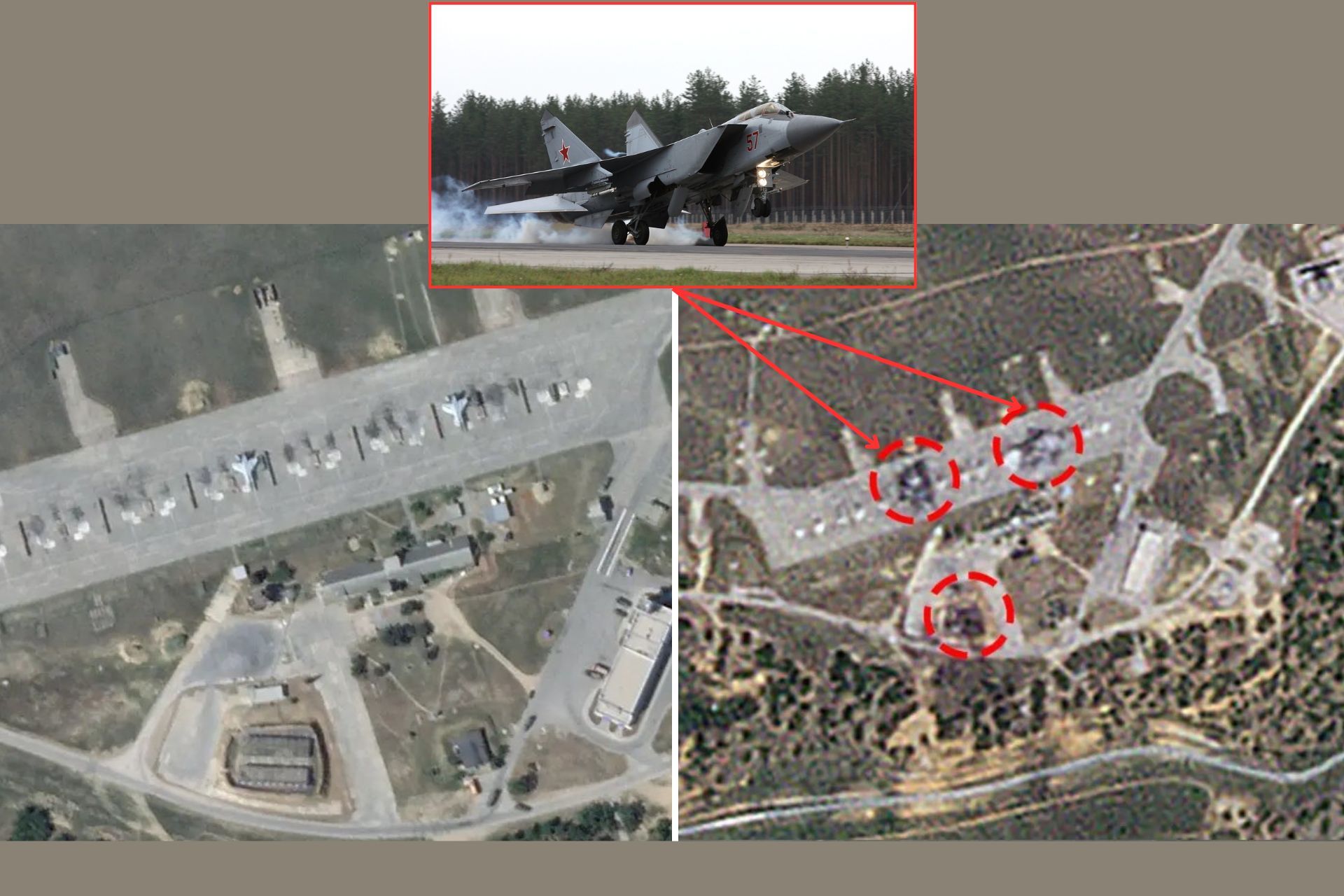Breaking news
Ukrainian Strikes Target MiG-31s at Belbek Air Base in Crimea with ATACMS Missiles.
Recently, Ukrainian forces have intensified their offensive against Russian military installations in Crimea, specifically targeting the Belbek Air Base. This strategic site for the Russian Air Force regularly hosts MiG-31 interceptors. Reports, including satellite imagery and details from Forbes, indicate that coordinated strikes occurred on the night of May 14-15, with subsequent possible attacks causing substantial damage to both aircraft and air defense infrastructure, such as S-300 or S-400 systems.
Follow Army Recognition on Google News at this link

Satellite images taken before and after the ATACMS strikes reveal the destruction of at least two MiG-31 aircraft, as well as significant damage to infrastructure (Picture source: X Channel @bayraktar_1love)
These attacks were partially executed using the Army Tactical Missile System (ATACMS), a long-range strike capability provided by the United States. The deployment of these missiles enabled strikes on targets up to 305 kilometers away, effectively covering the entirety of Crimea. Satellite images from Planet Labs revealed significant scorched areas on the main flight line of the base, indicating major impacts. Additionally, it was reported that air defense radars detected the incoming missiles two minutes before impact, suggesting limited time for countermeasures.
The Army Tactical Missile System (ATACMS) is a surface-to-surface missile developed by Lockheed Martin for the United States Army. Production of the ATACMS began in 1986, with the missile entering service in 1991. Designed for precision strikes, the ATACMS is capable of delivering a variety of warheads, including cluster munitions and unitary high-explosive payloads. Its primary use is to engage high-value targets such as air defense systems, command and control centers, and logistics nodes.
The ATACMS boasts a range of between 100 and 305 kilometers (62 to 190 miles), depending on the variant, allowing it to strike targets well behind enemy lines. The missile is launched from the M270 Multiple Launch Rocket System (MLRS) and the M142 High Mobility Artillery Rocket System (HIMARS), providing flexibility and mobility on the battlefield. Its precision guidance and significant range make it a crucial asset for modern artillery operations.
The MiG-31, equipped with long-range R-37 missiles, poses a significant threat to Ukrainian forces, necessitating operations at lower altitudes to avoid detection. Although no confirmed losses of MiG-31s have been reported following these attacks, multiple aircraft suffered damage, and key air defense equipment was destroyed.
The MiG-31 is a supersonic interceptor aircraft developed by the Mikoyan design bureau in the Soviet Union. Production of the MiG-31 began in 1975, and it officially entered service in 1981. Designed to replace the earlier MiG-25, the MiG-31 is built for speed and altitude, capable of flying at high altitudes and supersonic speeds to intercept and destroy incoming enemy aircraft, cruise missiles, and low-flying targets.
The MiG-31 features a two-seat, twin-engine configuration and is equipped with advanced radar systems, including the Zaslon phased-array radar, which allows it to track multiple targets simultaneously at long ranges. It can carry a variety of air-to-air missiles, including the long-range R-37, making it a formidable component of Russia's air defense. The aircraft's combination of speed, range, and advanced avionics ensures it remains a key asset in the Russian Air Force's interception capabilities.
In anticipation of these strikes, Russia had already relocated some of its MiG-31s from more vulnerable bases to more remote locations, beyond the initial range of ATACMS missiles received by Ukraine. However, with Ukraine now equipped with more advanced versions of these missiles, nearly all of Crimea remains vulnerable to future attacks, forcing continuous reassessment of Russian air defense strategies and aircraft deployment.
Moreover, the partial destruction of valuable air defense systems and the damage to key facilities have strategic implications, weakening defense coverage around the critical Sevastopol naval base. These strikes are part of a broader context of increased US military support to Ukraine following the resolution of a deadlock in Congress, signaling renewed pressure on Russian forces in Ukraine.
The recent campaign of strikes on Belbek demonstrates Ukraine's enhanced ability to target and strike deep within Russian-controlled territory, showcasing not only the effectiveness of ATACMS but also sophisticated coordination in the planning and execution of these attacks.


























